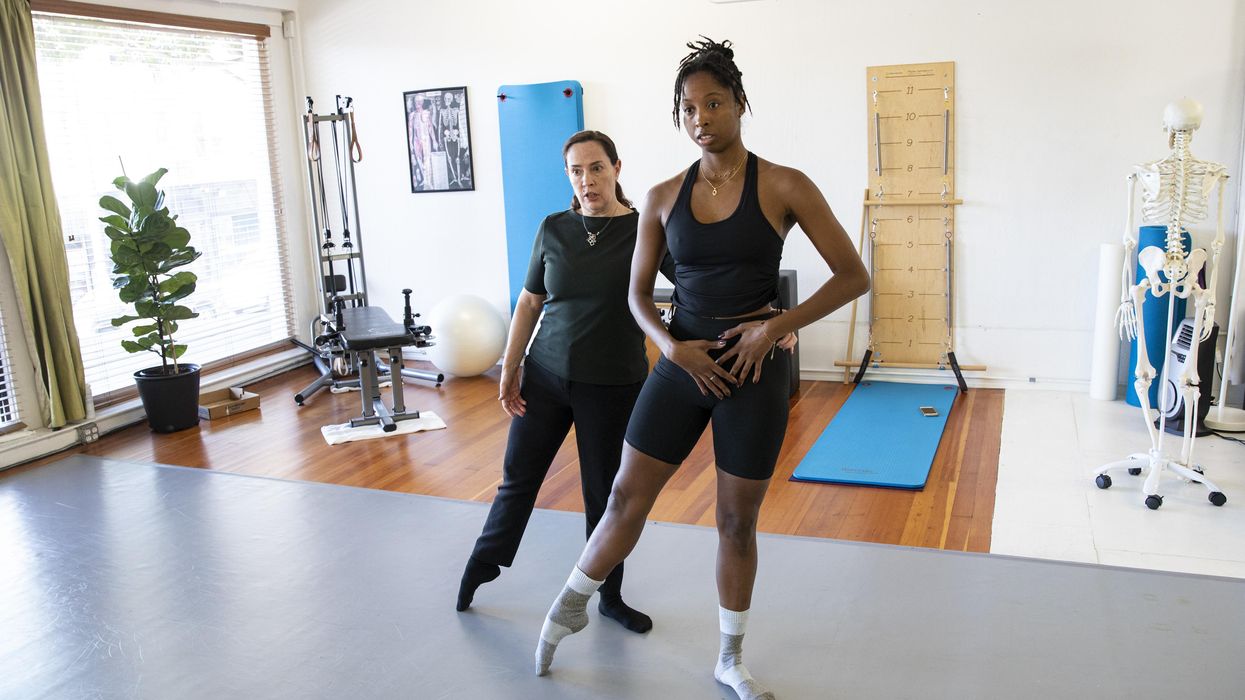Turn On A Dime: Use These Tips for Faster Directional Changes
There’s nothing more thrilling than watching a dancer who’s barreling through space suddenly change direction. But
what might look effortless to the audience actually takes an immense amount of control and coordination.
Regardless of the genre of dance, the importance of directional changes is often overlooked in conversations about technique, written off as a mere transition from one step to the next. That’s one of the reasons why dancers are so susceptible to injuries in these moments.
A renewed focus on directional changes can help you not only to become less prone to injury, but to stand out onstage.
Keep Your Weight Forward
The first step to clean, razor-sharp directional changes is knowing where your weight is at all times. Following the philosophy of Boston Ballet artistic director Mikko Nissinen, Peter Stark has dancers practice standing in first position, imagining that there’s an x-ray machine looking down at their bodies. “Your collarbones should be slightly in front of your hip bones,” says the Boston Ballet II associate director and head of the Boston Ballet School’s men’s program. “That puts the weight slightly further forward on your toes. From there, you already start to have a sense of natural movement.”
This methodology continues at the barre. Stark has dancers practice opening their grip and pushing on the barre with their palm, fingers released. “This allows you to roll your inside shoulder back, and position your weight more on the ball of your foot,” he says. This approach leads to greater movement possibilities and prepares dancers to change direction with more ease.

Igor Burlak, Courtesy Boston Ballet
Anticipate, Anticipate, Anticipate
For Lakey Evans-Peña, a Horton teacher on faculty at The Ailey School, knowing what’s coming next is key to redirecting your energy. “Dancers are often not able to shift momentum quickly, so they end up getting behind themselves,” she says. “When that happens, I don’t slow it down, but we talk about what the biggest challenges of the step are, so they know where their energy should be in each moment.”
Very tall dancers—like Evans-Peña herself—can have an especially hard time with this. “I talk to dancers about sequencing faster, so they’re moving a little bit quicker, not so they get ahead of the phrasing, but so they can assemble themselves more quickly.”

Lauren Nicole Evans, Courtesy The Ailey School
Breathe Through It
Holding your breath can get in the way of the seamless coordination needed for smooth directional changes, says Stark. “Dancers hold tension in unusual places, and that can create a blockage of movement,” he says. “I try to identify where the tension is and get dancers to transfer it somewhere you want it, like the lower stomach or the upper thighs.” Stark also touts Gyrotonic as a great tool for breathwork.
“Using the breath can help connect you and keep the flow in what you’re doing,” says Evans-Peña.

Courtesy SF Performing Arts Physical Therapy
The Antidotes to Injury
Kendall Alway, the physical therapist at the helm of San Francisco Performing Arts Physical Therapy, has long seen injuries stemming from poorly executed directional changes. But in the wake of the COVID-19 pandemic, as dancers return to the studio and to moving big, these injuries are more prevalent than ever. Alway has noticed a surge in sprained ankles, knee strains and an unusual form of tendinitis as dancers have become less accustomed to making big weight shifts due to time spent dancing at home.
In addition to gradually ramping up practice in jumps and turns, she has zeroed in on two areas that can help stave off injury from directional changes now and in the future: turnout and core strength.
It’s not only ballet dancers who need turnout. Alway says that dancers without adequate cross-training in ballet can struggle without sufficient access to their deep rotator muscles. Stark has never forgotten one of Suki Schorer’s adages from his years as a student at the School of American Ballet: “She said turnout enables us to move quickly and easily in different directions.”
Teachers:
For tips on helping your students master directional changes, visit dance-teacher.com.





